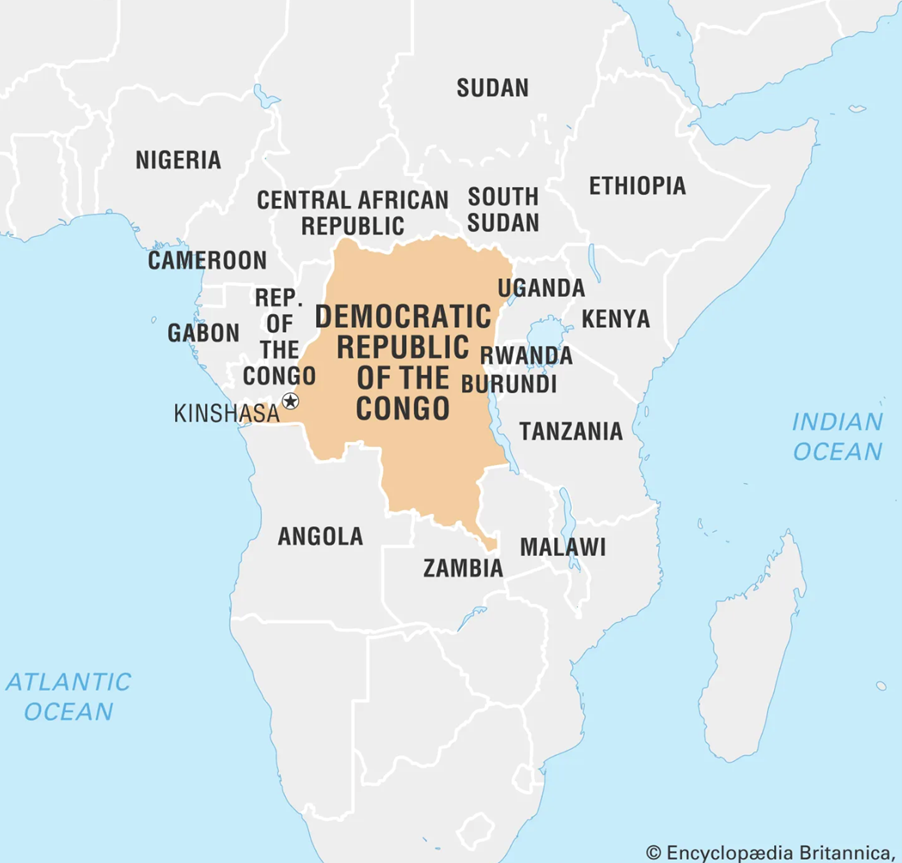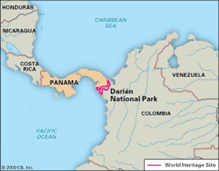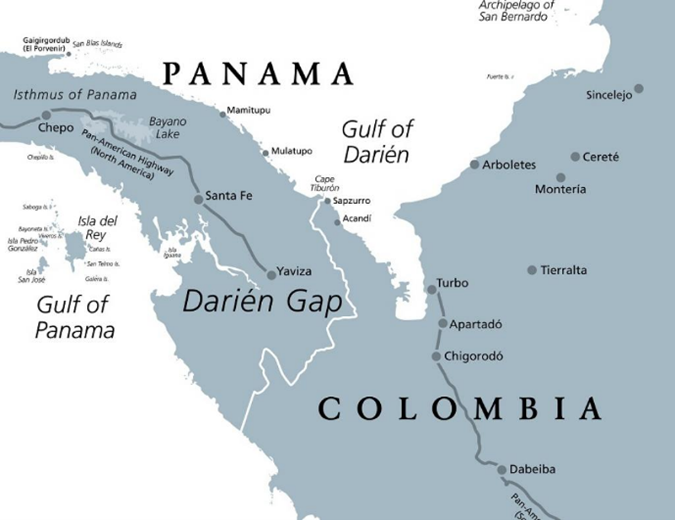IASbaba's Daily Current Affairs Analysis
Archives
(PRELIMS & MAINS Focus)
Syllabus
- Prelims – Geography
Context: Over the past few weeks, many have died and hundreds of thousands displaced after the fighting between the Congolese army and Rwandan-backed M23 rebel group escalated.
Background:-
- The growing tensions between Congo and Rwanda, which has been accused of supporting the rebels, have not only increased the risk of an all-out conflict but also pose a threat to food security for millions.
About Democratic Republic of the Congo

- The Democratic Republic of the Congo is a country in Central Africa. By land area, the DRC is the second-largest country in Africa.The country has a 25-mile (40-km) coastline on the Atlantic Ocean but is otherwise landlocked.
- It is named after the Congo River, which flows through the country.The national capital and largest city is Kinshasa.
- The country is often referred to by its acronym, the DRC, or called Congo (Kinshasa), with the capital added parenthetically, to distinguish it from the other Congo republic, which is officially called the Republic of the Congo and is often referred to as Congo (Brazzaville).
- The country is bordered by the Republic of the Congo, Central African Republic, South Sudan, Uganda, Rwanda, Burundi, Tanzania (across Lake Tanganyika), Zambia, Angola and the South Atlantic Ocean.
- The Democratic Republic of the Congo is extremely rich in natural resources (It boasts vast deposits of industrial diamonds, cobalt, and copper) but has suffered from political instability, lack of infrastructure, corruption, and centuries of both commercial and colonial extraction and exploitation.
Congo River
- The Congo River , formerly also known as the Zaire River, is the second-longest river in Africa, shorter only than the Nile, as well as the third-largest river in the world by discharge volume, following the Amazon and Ganges rivers.
- It is the world’s deepest recorded river, with measured depths of around 220 m. It is the only major river to cross the Equator twice.
- The river and its tributaries flow through the Congo rainforest, the second largest rainforest area in the world.It drains into the Atlantic Ocean.
Source: The Hindu
Syllabus
- Prelims – Current Event
Context: Shri Hardeep Singh Puri, Union Minister for Petroleum & Natural Gas and Housing and Urban Affairs, launched ‘ETHANOL 100.
Background:
- ETHANOL 100 fuel has the potential to transform our transportation sector and reduce our dependence on fossil fuels.
About Ethanol 100 OR E100:
- Contrary to popular belief, E100 fuel is not 100 percent ethanol.
- In accordance with specifications, E100 fuel includes 93-93.5 percent ethanol blended with 5 percent petrol and 1.5 percent co-solvent, which is a binder.
- Currently, E100 is priced the same as petrol — Rs 94.72/litre in Delhi, Rs 104.21/litre in Maharashtra and Rs 100.75/litre in Chennai. However, with wider adoption of the fuel, E100 will definitely be cheaper than petrol or diesel since ethanol is cheaper.
- In addition, the government’s keenness to provide a fillip to biofuels which help in crude oil import substitution is also likely to make it competitive in comparison to the conventional fuels.
- Ethanol is made from agricultural feedstock, which also provides income to farmers, making them a stakeholder in decarbonisation of the economy.
- E100 can be used as fuel in any flex fuel engine car. A flex fuel engine car is designed to run on a variety of fuels. It comes equipped with an internal combustion engine (ICE) which can run on petrol or ethanol or methanol, giving consumers choice at the point of sale of the fuel.
- ETHANOL 100 stands as a cleaner, greener alternative, boasting lower emissions of greenhouse gases and pollutants, thus aiding in combating climate change and enhancing air quality.
- With its high-octane rating, typically between 100-105, ETHANOL100 proves ideal for high-performance engines, ensuring improved efficiency and power output all while minimizing environmental impact.
Source: PSU WATCH
Syllabus
- Prelims- Environment
Context: Recently, Fluoride contamination was detected in three districts of Kerala.
Background:
- According to the State Environment department, the source of contamination is likely geogenic, meaning these constituents are naturally present in the rock or soil matrix and enter groundwater through various chemical processes.
About FLUORIDE CONTAMINATION
- Fluoride contamination in water is a critical issue worldwide.
- While fluoride is essential for dental health at low concentrations, excessive exposure can lead to health problems.
Key Points:
- Essential Element: Fluoride is naturally present in water and certain foods. It plays a crucial role in preventing tooth decay.
- Threshold: However, when fluoride levels exceed 1.5 mg/L, it becomes toxic to humans. According to the Bureau of Indian Standards, the maximum permissible limit of arsenic in groundwater meant for drinking is 0.01 mg/l, while the corresponding limit of fluoride is 1.0 mg/l, which can be extended to 1.5 mg/l in case no alternative source of water is available.
Health Impacts:
- Dental Fluorosis: Excessive fluoride causes dental fluorosis, characterized by staining, pitting, and weakening of tooth enamel.
- Skeletal Fluorosis: Chronic exposure leads to skeletal fluorosis, affecting bones and joints.
- Neurological Effects: High fluoride levels may impact the nervous system.
Sources of Contamination:
- Geochemical Reactions: Fluoride leaches from rocks and soil into groundwater.
- Geological Factors: High fluoride content in specific geological formations.
- Anthropogenic Factors: Industrial processes, fertilizers, and mining contribute to contamination.
Preventive Measures:
- Water Treatment: Implementing effective water treatment methods to reduce fluoride levels.
- Monitoring: Regular monitoring of fluoride content in drinking water.
- Awareness: Educating communities about safe water practices.
- Alternative Sources: Providing alternative water sources in affected areas.
- Endemic Areas: Certain regions are endemic for fluorosis due to natural geological factors.
- Balancing Act: Balancing the benefits of fluoride for dental health with the risks of toxicity is crucial.
Other Pollutants that Affect Water Quality:
- Arsenic reaches groundwater through industrial and mining discharges, as well as fly ash ponds from thermal power plants. Chronic exposure to arsenic-contaminated water may lead to diseases such as black foot disease, diarrhea, lung cancer, and skin cancer.
- Certain regions in India have localized occurrences of elevated uranium concentrations in groundwater.
- Other elements that act as water pollutants include mercury (causing Minamata disease), cadmium (associated with Itai-Itai disease and nephritis), chromium (linked to lung cancer and reduced photosynthetic activities in plants), copper (causing various health issues), zinc, and lead (associated with anaemia, mental retardation, and other health problems).
Source: The Hindu
Previous Year Question
Q1. Which of the following can be found as pollutants in the drinking water in some parts of India?
- Arsenic
- Sorbitol
- Fluoride
- Formaldehyde
- Uranium
Select the correct answer using the codes given below.
- 1 and 3 only
- 2, 4 and 5 only
- 1, 3 and 5 only
- 1, 2, 3, 4 and 5
Syllabus
- Prelims :Geography
Context: The Darien Gap, a dense jungle spanning northern Colombia and southern Panama, has become a perilous route for migrants seeking asylum in the US.


Background
- The The challenging topography of humid, swampy rainforest as well as criminal gangs who control the area, make the route an extremely challenging and deadly one.
About Darien Gap
- The Darién Gap, also known as the “Tapón del Darién” in Spanish, is a geographic region in the Isthmus of Darién connecting the American continents within Central America.
- It consists of a large watershed, dense forest, and mountains in Panama’s Darién Province and the northern part of Colombia’s Chocó Department.
- The Darién Gap is the only overland path connecting Central and South America.
- Migrants, primarily Haitians and Venezuelans, hike through the dense jungle to reach the US border.
Key features of the Darién Gap include:
- Population: The Darién Gap is home to the Embera-Wounaan and Guna people and was also home to the Cueva people who became extinct by 1535, following the Spanish invasion of Panama.
- Geography: The geography of the Darién Gap on the Colombian side is dominated primarily by the river delta of the Atrato River, which creates a flat marshland at least 80 km (50 mi) wide. The Panamanian side, in stark contrast, is a mountainous rainforest.
- Roads: There is no road, not even a primitive one, across the Darién. The “Gap” interrupts the Pan-American Highway.
Source: Down To Earth
Syllabus
- Prelims – Current Event
Context: Recently, SEBI approve launch of beta version of T+0 settlement from March 28.
Background:
- At present, the Indian securities markets operate on a T+1 settlement cycle. The move aimed at increasing liquidity in the market.
About T+0 SETTLEMENT
- The T+0 settlement refers to the process of settling trades on the very day they are executed, eliminating the traditional waiting period associated with T+1, T+2, or T+3 settlements.
- It’s akin to receiving an item immediately after purchasing it online.
- In this new settlement cycle, investors selling their stocks will receive money on the same day of the sale, rather than the current T+1 process where trades are settled on the next trading day.
- SEBI had shortened the settlement cycle to T+3 from T+5 in 2002 and subsequently to T+2 in 2003. It introduced T+1 in 2021 and implemented in phases, with the final phase completed in January 2023.
- ThE move to introduce T+0 aims to increase liquidity in the market and provide an alternative alongside the existing T+1 settlement cycle.
- The Board will review progress after three and six months from the implementation date and consider shareholder feedback.
Source: Money Control
Syllabus
- Prelims & Mains – Art & Culture
Context: The Union government led by Prime Minister Narendra Modi has approved a new 32 kilometre railway line connecting the temple towns of Puri and Konark that are famous for the Shree Jagannath Temple and Sun Temple, respectively.
Background:
- Union Railway Minister Ashwini Vaishnaw said the new railway stretch will be developed into a spiritual and heritage tourism corridor.
About Konark Sun Temple:
- It is a UNESCO World Heritage Site and is also known as Black Pagoda, Arka Kshetra, and Padma Kshetra.
- The Sun Temple and Konark Wheel were built during the 13th century under the reign of Eastern Ganga King Narasimhadeva-I.
- It represents the most evolved period in Kalinga Architecture.
- Sun temples are temples dedicated to the worship of the Sun God and these are designed to highlight the celestial movement of the Sun.
- Materials used for building the temple include Chlorite, Laterite, and Khondalite rocks.
- Konark Sun Temple was once described by Nobel Laureate Rabindranath Tagore as the place where the language of stone surpasses the language of man.
Structure of the Konark Sun Temple:
- The main entrance of the Sun Temple, the Gajasimha – gaja meaning elephant and Simha referring to lions. According to mythology, lions resemble pride, elephants resemble wealth and both of them kill the human.
- Gajasimha leads to the Sun Temple’s finely carved Natya Mandapa, the hall for dance and theatre. The sculptures here depict different types of dance styles.
- It is the assembly hall of the temple and the steps that rise to Jagamohan are flanked by stone horses.
- The Jagamohan is followed by the deul which is the sanctum where the idol is placed.
- Bhoga-mandira (kitchen) to make bhoga for the deity and devotees.
Architectural features of the Konark Sun Temple:
- It was designed in such a way that the rising sun’s first rays would illuminate the sanctum and the presiding deity.
- It has been designed like the chariot of Surya, the Sun God. The temple stands on a base of a total of 24 intricately carved wheels, 12 on each side. The chariot seems to be drawn eastwards towards the dawn by a team of seven spirited horses.
- The thicker wheels are all carved with circular medallions at their centers on the widest part of the face. The rims are carved with designs of foliage with various birds and animals, whereas the medallions in the spokes are carved with the figures of women in various luxurious poses, mostly of a sensual nature.
- These seven horses have been named in Bhagawat Gita, as ‘Gyatri’, ‘Usnika’, ‘Anustuv’, ‘Vrihati’, ‘Pangti’, ‘Tristup’, and ‘Jagati’ which possibly stand for the rhythmic representation of the sacred verses of the Vedas. The seven horses are also named after the seven colours of the rainbow – Sahasrara (Violet), Indra-nila (Indigo), Nila (Blue), Haritaha (Green), Pita (Yellow), Kausumbhaha (Orange), and Rakta (Red).
- There are two carved war horses in front of the southern side of the Konark Temple. The sculpture depicts each of them with its massive strength and energy crushing down the warrior. This figure of the war horse of Konark has been accepted as the symbol of the state Government of Odisha.
- It has three impressive carvings of the Sun God at three strategic locations, to catch the sun at dawn, at noon, and sunset. The carvings at the base of the temple and on its walls chronicle everyday activities.
- Some carvings depict sensuous details while others exhibit mythical creatures and animals like elephants and birds.
Source: The Hindu
Practice MCQs
Q1.) With reference to the T+0 settlement cycle, consider the following statements:
- It is introduced by the Reserve Bank of India.
- In this settlement cycle, investors selling their stocks will receive money on the same day of the sale.
Which of the statements given above is/are correct?
- 1 only
- 2 only
- Both 1 and 2
- Neither 1 nor 2
Q2.) The Darién Gap, recently found in news is a geographic region in the Isthmus of Darién connecting the
- Africa and West Asia
- Europe and Asia
- Central and South America
- South Korea and Japan
Q3.)With reference to fluoride contamination, consider the following statements:
- Fluoride leaches from rocks and soil into groundwater.
- when fluoride levels exceed 1.5 mg/L, it becomes toxic to humans.
- Excessive fluoride leads to skeletal fluorosis.
How many of the statements given above are not correct?
- Only one
- Only two
- All three
- None
Comment the answers to the above questions in the comment section below!!
ANSWERS FOR ’ 18th March 2024 – Daily Practice MCQs’ will be updated along with tomorrow’s Daily Current Affairs.st
ANSWERS FOR 16th March – Daily Practice MCQs
Q.1) – d
Q.2) – d
Q.3) – c













